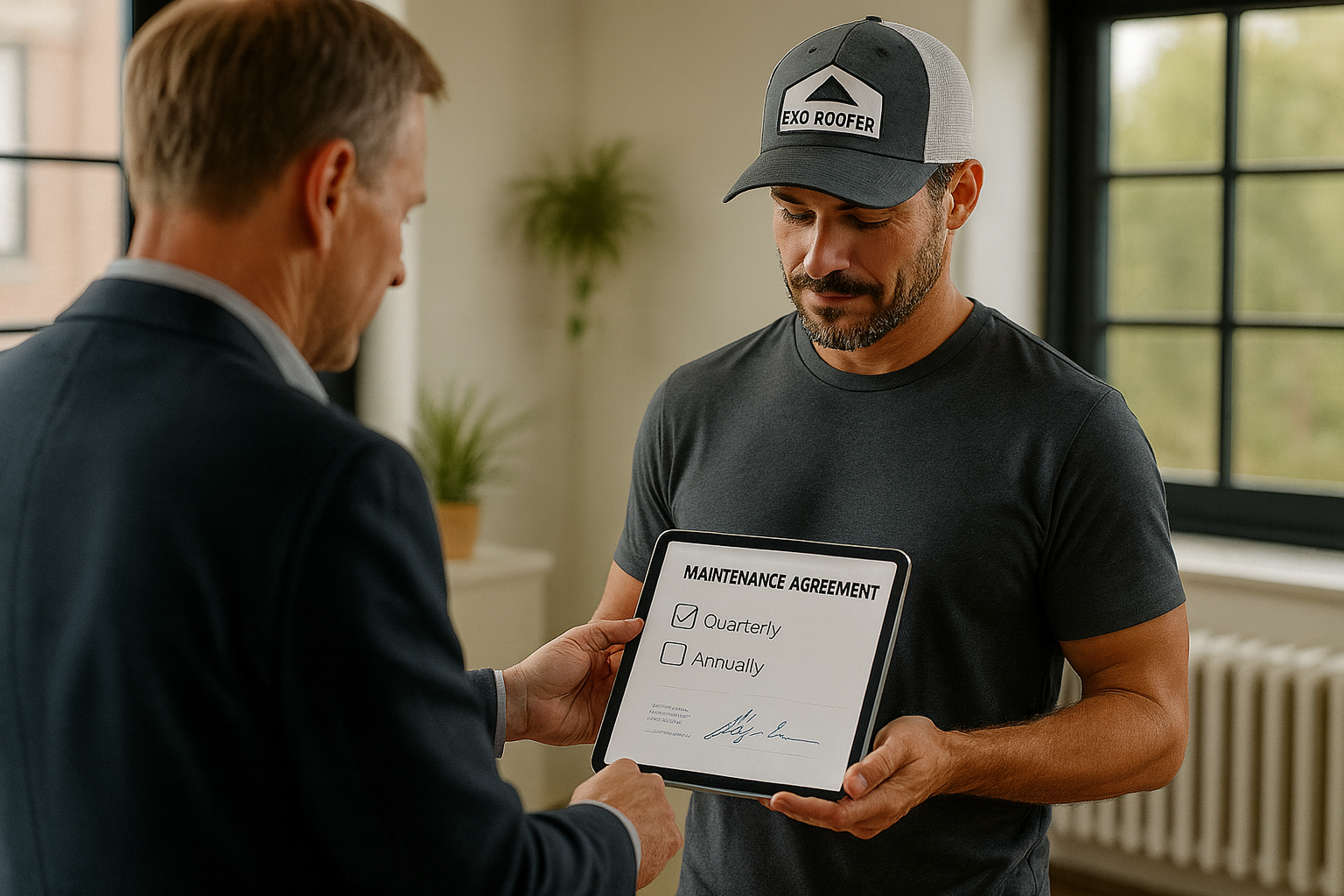Why Maintenance Contracts Are the Secret to Profitability in Commercial Roofing
In commercial roofing, long-term success isn’t only about securing the next big project. While large installations deliver revenue spikes, they are unpredictable and often subject to price-driven competition. The most profitable roofing companies know that building a strong service division supported by maintenance contracts is the real driver of stability, recurring revenue, and long-term business value.
What Are Maintenance Contracts and Why Do They Matter?
A maintenance contract is an ongoing service agreement between a contractor and a client, designed to provide regular inspections, preventive care, and minor repairs. Rather than relying solely on one-off projects, these agreements create a reliable stream of recurring revenue that helps contractors build a stronger, more resilient business model.
The advantages are significant. First, maintenance contracts smooth out cash flow by providing predictable income throughout the year. Instead of facing slow seasons with uncertainty, contractors have steady revenue that allows them to plan ahead and cover operational costs with confidence. They also deliver higher profit margins compared to large re-roofing projects, with service work often achieving margins of 40% to 60%.
Another critical benefit is customer retention. By working with clients on a regular basis, roofing companies strengthen relationships and position themselves as the first choice when larger repairs or full replacements are needed. This ongoing engagement increases lifetime customer value and creates opportunities to upsell additional services.
From a business valuation standpoint, maintenance contracts are even more impactful. Companies with significant recurring revenue are often valued 3-5x higher than their annual service income. Investors and buyers place a premium on predictable revenue streams, making maintenance programs a powerful tool for any contractor thinking about succession planning or eventual sale.
Finally, maintenance revenue creates resilience in difficult times. During economic downturns or events that stall new projects, service contracts keep income flowing. This helps contractors avoid the volatility that comes with relying solely on large, one-time projects.
How Technology Supports Maintenance Programs
While the benefits of maintenance contracts are clear, managing them at scale requires the right tools and processes. This is where roofing software and consulting support become game changers.
Technology enables contractors to streamline the entire lifecycle of maintenance agreements. Scheduling platforms ensure recurring site visits happen on time, while automated invoicing provides consistent billing without extra administrative effort. Digital inspection tools allow field teams to capture photos, notes, and measurements in real time, creating accurate records that flow directly back to the office. This eliminates paperwork and ensures clients receive timely, professional reports.
When contractors pair maintenance contracts with systems that include client portals, the value multiplies. Every inspection, repair, or service visit performed under the agreement is tracked in the portal, giving clients a clear record of activity across their portfolio. Over time, this consistent flow of data helps property managers and owners see patterns, prioritize larger capital projects, and plan for future replacements with confidence. Instead of just reacting to problems, the maintenance program becomes a proactive asset management tool, and contractors position themselves as the partner clients depend on to guide long-term roofing decisions.
Data management is another critical piece. With a connected software stack, contractors can track every asset, repair, and client interaction in one system. Dashboards and KPIs provide real-time visibility into service performance, helping owners understand profitability, client engagement, and areas for improvement. Instead of reacting to problems, teams can proactively manage contracts and continually improve how service is delivered.
Consulting and training also play a key role. Implementing new systems can be complex, which is why having structured rollout support, staff coaching, and integration guidance helps ensure contractors see real value from their technology investment. Ongoing enablement keeps systems aligned with business goals so the maintenance program continues to grow stronger over time.
Conclusion
Maintenance contracts are much more than a side service. They are a strategic path to stronger profitability, higher valuations, and long-term resilience in the commercial roofing industry. When paired with the right technology and processes, these agreements become easier to manage and more profitable to deliver.
At Exo Impact, we specialize in helping roofing contractors unlock the full potential of maintenance programs by aligning software, workflows, and business goals. Whether through discovery workshops, implementation management, or ongoing optimization, our mission is to help contractors build profitable service divisions that create lasting growth.
Let’s talk about how to scale your maintenance programs with the right tools and consulting.


